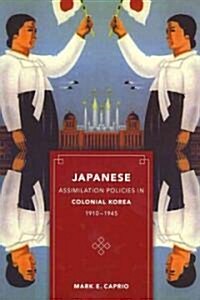
Japanese assimilation policies in colonial Korea, 1910-1945
- 개인저자
- Mark Caprio
- 발행사항
- Seattle: University of Washington Press, 2009
- 형태사항
- ix, 320 p. ; 24cm
- ISBN
- 9780295989013
- 청구기호
- 349.13011 C253j
- 서지주기
- Includes bibliographical references and index
- 주제
- Koreans
소장정보
| 위치 | 등록번호 | 청구기호 / 출력 | 상태 | 반납예정일 |
|---|---|---|---|---|
이용 가능 (1) | ||||
| 1자료실 | 00012273 | 대출가능 | - | |
- 등록번호
- 00012273
- 상태/반납예정일
- 대출가능
- -
- 위치/청구기호(출력)
- 1자료실
책 소개
In Korea, segregation was built into everyday life. Japanese and Koreans lived in virtually segregated communities. The colonial education system, unwilling to intermix large numbers of Koreans with Japanese, segregated students into two separate and unequal systems. As a result, inferior education blocked the social advancement of Koreans. Intermarriage between Koreans and Japanese was comparatively rare, while many who did marry found themselves ostracized from Korea-based Japanese society. Japan reinforced the second-class status of Koreans by limiting employment opportunities and denying representation in the political institutions Japan constructed for Korea. Japanese colonial policy during World War II enabled some improvement, as Koreans were promoted in government and factory positions to replace Japanese recalled home or sent to the battlefront. Japanese Assimilation Policies in Korea, 1910-1945 also examines the diverse views held by Koreans regarding Japan's colonial policy.
